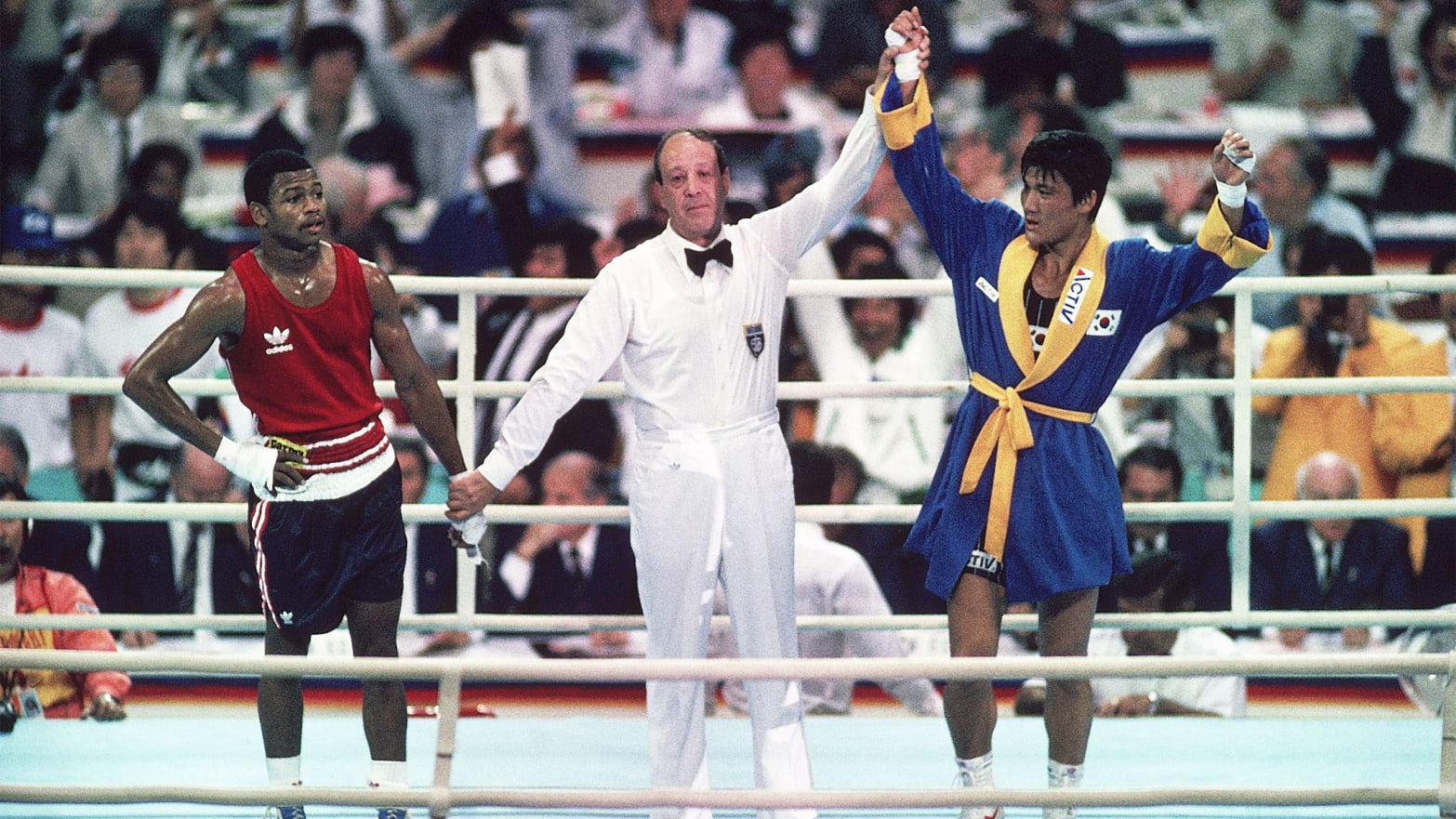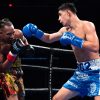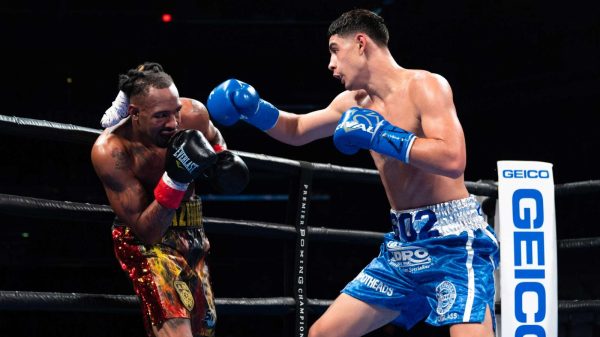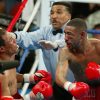In the adrenaline-fueled arena of boxing, where the roar of powerful punches and dramatic knockouts often dominates the narrative, a distinguished group of fighters stand out for their unparalleled defensive prowess. These virtuosos, who are among the best defensive boxers of all time, have crafted their legacies on the nuanced science of defense, turning the ring into a strategic battlefield where avoiding hits is as crucial as delivering them. This overview highlights these maestros, whose expertise in dodging, blocking, and counter-striking has elevated their matches to exemplars of boxing’s intricate defensive techniques. From Pernell “Sweet Pea” Whitaker’s masterful footwork to Floyd “Money” Mayweather’s iconic shoulder roll, these athletes have transformed defense into an art form, underscoring the potency of evasion and tactical foresight in the squared circle. As we explore the careers and tactical philosophies of these defensive geniuses, we pay tribute to the sophisticated art of boxing defense, celebrating the intelligence, skill, and creativity that mark these fighters as timeless icons in the sport.
8. Wilfred Benitez
Wilfred Benitez, known as “El Radar” for his uncanny ability to anticipate and evade his opponents’ strikes, was a virtuoso of defensive boxing, whose style was as enigmatic as it was effective. Born into a boxing family in Puerto Rico, Benitez turned professional at the tender age of 15 and quickly made a name for himself with his prodigious talent. His defensive prowess was not merely about avoiding punches; it was an art form, a ballet of movements that bewildered and frustrated his adversaries.
Benitez’s style was characterized by his extraordinary reflexes and spatial awareness, allowing him to slip punches with minimal movement, often by mere inches, making his opponents seem as if they were shadowboxing. His counter-punching was precise and calculated, striking with surgical accuracy at the openings his defense created. Benitez had a unique ability to fight effectively off the ropes, turning a position often seen as disadvantageous into a tactical advantage, drawing opponents in and exploiting their aggression.
The zenith of Benitez’s career came when he became the youngest world champion in boxing history at age 17. Throughout his illustrious career, he claimed world titles in three weight classes, leaving an indelible mark on the sport with his defensive mastery, proving that in the theatre of boxing, the art of not getting hit elevates the sweet science to new heights.
7. James Toney
James Toney, known in the boxing world as “Lights Out,” epitomized the old-school, crafty style of boxing that harked back to the sport’s golden era. His approach in the ring was a blend of technical prowess, defensive genius, and counter-punching acumen, making him one of the most respected and feared fighters of his time. Toney’s style was characterized by his masterful use of the shoulder roll defense, a technique where a fighter uses their lead shoulder to deflect punches and create angles for counter-attacks. This defensive maneuver became a hallmark of Toney’s fighting style, allowing him to protect himself effectively while setting up powerful counter shots.
Toney’s ring IQ was second to none; he possessed an innate ability to read his opponents and adapt his strategy mid-fight, often outthinking and outmaneuvering younger, faster adversaries. His offensive arsenal was diverse, featuring sharp jabs, precise combinations, and devastating uppercuts, all thrown with impeccable timing and accuracy. Despite his heavyweight frame in later years, Toney maintained the agility and skill of a middleweight, showcasing footwork and head movement that made him a difficult target to hit.
Throughout his career, Toney’s blend of defensive skill, counter-punching, and mental fortitude brought him multiple world championships across various weight classes. His style remains a study in the effectiveness of defense and counter-punching in the sweet science of boxing.
6. Andre Ward
Andre Ward’s boxing style is a testament to the adage that the best offense is a good defense. Renowned for his tactical intelligence and adaptability, Ward’s approach in the ring was characterized by a meticulous blend of defensive prowess and strategic offense. Unlike fighters who rely on sheer power or relentless aggression, Ward’s game was built on precision, timing, and an exceptional ability to read his opponents, making him one of the most versatile and skilled boxers of his era.
Ward’s defense was not about evasion alone; it was about control. He excelled in close quarters, using his superb inside fighting skills to nullify his opponents’ strengths while creating opportunities for his own offense. His clinch work, often overlooked, was a key aspect of his strategy, allowing him to disrupt his opponents’ rhythm and dictate the pace of the fight.
Offensively, Ward was methodical and efficient. He didn’t waste punches; each strike was thrown with purpose, whether it was a sharp jab to maintain distance or a well-placed body shot to wear down his adversary. Moreover, Ward’s adaptability was on full display in every bout; he could switch from a defensive masterclass to an aggressive pursuit without missing a beat, showcasing his high ring IQ.
Throughout his undefeated career, culminating in becoming the unified light heavyweight champion, Ward’s style was a blend of art and science, proving that intelligence and strategic planning are just as vital in the ring as speed and power.
5. Terence Crawford
Terence Crawford’s boxing style is a harmonious blend of versatility, tactical intelligence, and raw power, making him one of the most formidable fighters of his generation. Known for his ambidextrous abilities, Crawford can seamlessly switch between orthodox and southpaw stances, a rare skill that confounds his opponents and allows him to exploit angles and openings that other fighters simply cannot. This adaptability makes him unpredictable and gives him a distinct edge in both offense and defense.
Crawford’s approach in the ring is calculated and methodical. He often starts fights by studying his opponents, using his excellent jab and footwork to maintain distance while assessing their strengths and weaknesses. As the rounds progress, Crawford’s ability to adapt and adjust his strategy becomes evident. He increases his aggression intelligently, applying pressure and landing precise combinations that gradually wear down his adversaries.
Defensively, Crawford is equally adept. His keen reflexes and anticipation enable him to slip punches and counter effectively, often turning his opponents’ aggressiveness against them. His ring IQ is among the highest in the sport, allowing him to control the pace of the fight and dominate his opponents strategically.
With a perfect blend of skill, intelligence, and power, Crawford’s style is a testament to the depth and complexity of modern boxing, earning him championships across multiple weight classes and solidifying his status as one of the elite fighters in the sport.
4. Emmanuel Augustus
Emmanuel Augustus, formerly known as Emmanuel Burton, was a unique figure in the boxing world, renowned for his unconventional and highly entertaining fighting style. Dubbed “The Drunken Master” for his ability to mimic erratic, off-balance movements reminiscent of a drunken person, Augustus brought a level of showmanship and unpredictability to the ring that was unmatched. His style was not just for show; it was a calculated method to confuse and disrupt the rhythm of his opponents, making him a difficult target to hit.
Augustus’ approach to fighting was a blend of rhythmic movement, unexpected angles, and sudden shifts in tempo. He would often employ a loose, fluid guard, bobbing and weaving with exaggerated motions, only to snap back with precise, well-timed punches. This deceptive quality made him a nightmare for even the most disciplined fighters, as he could switch from a seemingly vulnerable state to a sharp offensive in a blink.
Despite his record not fully reflecting his talent, Augustus was highly respected within the boxing community for his skills and heart. His bouts were lessons in adaptability and creativity in the ring, showcasing his ability to turn boxing into a form of expressive performance while maintaining competitive edge. Augustus’ style was a reminder of the artistry in boxing, blending athletic prowess with an almost theatrical flair.
3. Floyd Mayweather Jr
Floyd Mayweather Jr.’s boxing prowess is epitomized by his adoption of the Philly Shell, a defensive strategy that showcases his unparalleled technical mastery and defensive acumen, solidifying his status as one of the all-time boxing greats. Embracing the “hit and not get hit” philosophy, Mayweather elevated the Philly Shell technique, which involves the use of a lowered lead hand, shoulder roll, and precise footwork, to new heights. This allowed him to expertly deflect incoming punches using his shoulder, creating opportunities to counterattack with his right hand while maintaining a robust defensive stance.
In the squared circle, Mayweather’s approach was defined by his intellectual game and versatility. He was a tactical boxer who rigorously analyzed his opponents, capitalizing on their vulnerabilities with exacting accuracy. His offensive strategy relied more on precision and timing than sheer force, with his jab serving as a critical component of his tactical toolbox. This jab was not merely for scoring but was instrumental in dictating the fight’s tempo and managing the spatial dynamics of the bout.
Beyond his physical skills, Mayweather’s ring IQ was unparalleled. He could adjust his strategy mid-fight, seamlessly shifting from defense to offense, dictating the terms of the engagement. His fights were a chess match, with Mayweather always two steps ahead of his opponents, a testament to his dedication to the craft and his understanding of the sweet science of boxing.
2. Winky Wright
Winky Wright’s boxing style was emblematic of technical proficiency and defensive mastery, making him one of the most formidable and respected fighters of his era. Known for his impenetrable defense, Wright utilized a high guard, often referred to as a “peek-a-boo” defense, keeping his gloves close to his face and elbows tight to his body, effectively neutralizing his opponents’ offensive assaults. This defensive stance became a hallmark of Wright’s style, frustrating even the most aggressive and powerful punchers.
Wright’s offensive strategy was built around his superb jab, which he used not only as a weapon to score points but also as a tool to control the pace and distance of the fight. His jab was a constant presence in his bouts, setting up combinations and keeping his opponents at bay. Despite his defensive prowess, Wright was not averse to going on the offensive; he was a master at picking his moments to attack, using precise, calculated combinations to break through his opponents’ defenses.
What set Wright apart was his ring intelligence and discipline. He rarely deviated from his game plan, showcasing a level of patience and strategic acumen that allowed him to dominate his weight class and secure victories over some of the biggest names in the sport. Winky Wright’s style, characterized by an impenetrable defense and a potent jab, remains a textbook example of the effectiveness of technical skill and strategic planning in the sport of boxing.
1. Pernell Whitaker
Pernell Whitaker, affectionately known as “Sweet Pea,” was a maestro of defense in the boxing ring, his prowess in this aspect of the sport elevated to an art form. Whitaker’s style was characterized by an almost ethereal ability to slip, slide, and evade punches with a grace and fluidity that seemed to defy the laws of physics. His defensive maneuvers were not just about avoiding being hit; they were about making his opponents look ineffectual, often leaving them swinging at air as he danced just beyond reach.
Whitaker’s agility and footwork were the cornerstones of his defensive genius. He possessed an uncanny ability to gauge distance and timing, allowing him to react to his opponents’ moves with split-second precision. His use of the shoulder roll, much like Floyd Mayweather Jr. after him, was exemplary, enabling him to deflect punches and immediately counter with sharp, accurate shots.
Beyond his physical attributes, Whitaker’s ring IQ was off the charts. He had an intuitive understanding of his opponents’ strategies, which he would dismantle with his elusive movement and counter-punching.
His defense was his offense, as he often frustrated opponents into making mistakes, which he capitalized on with clinical efficiency.
Pernell Whitaker’s legacy as a defensive wizard is cemented in the annals of boxing history, his name synonymous with the pinnacle of boxing craftsmanship, illustrating that the sweet science is as much about not getting hit as it is about landing punches. Whitaker’s name belongs with the best defensive boxers of all time.










